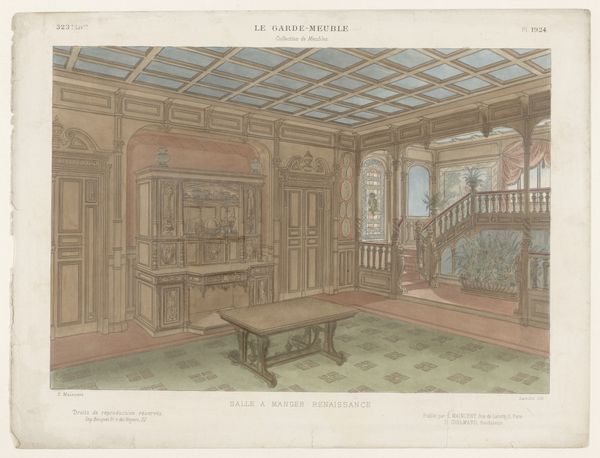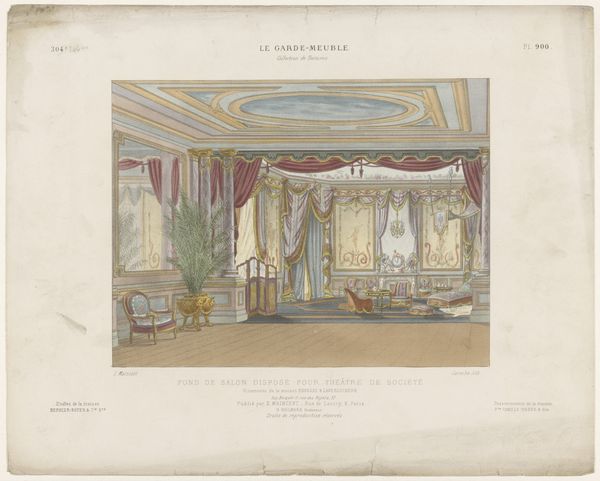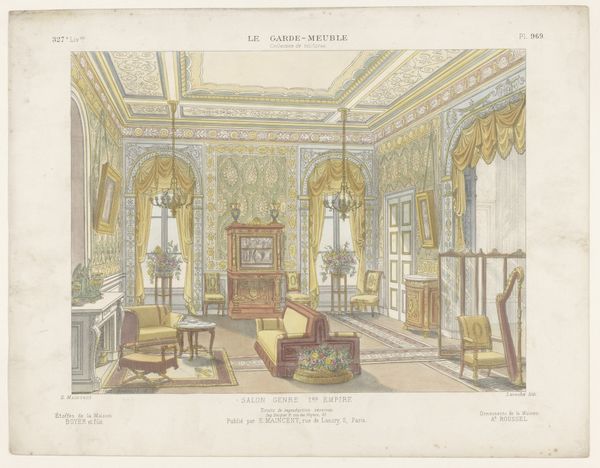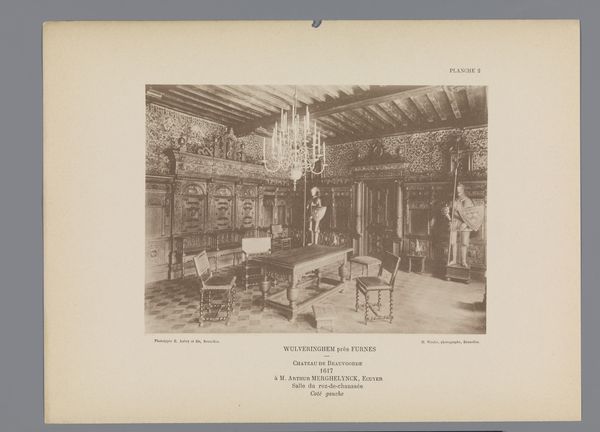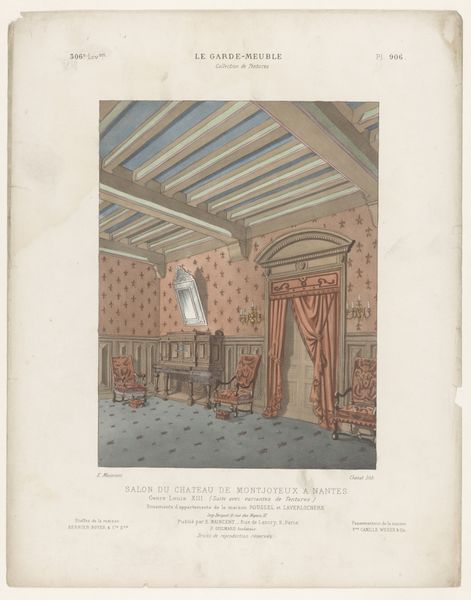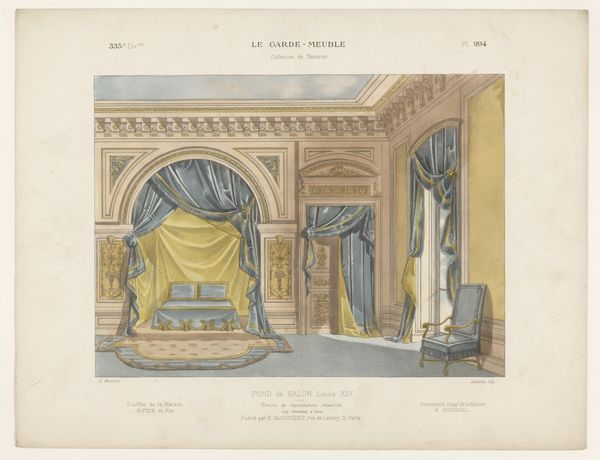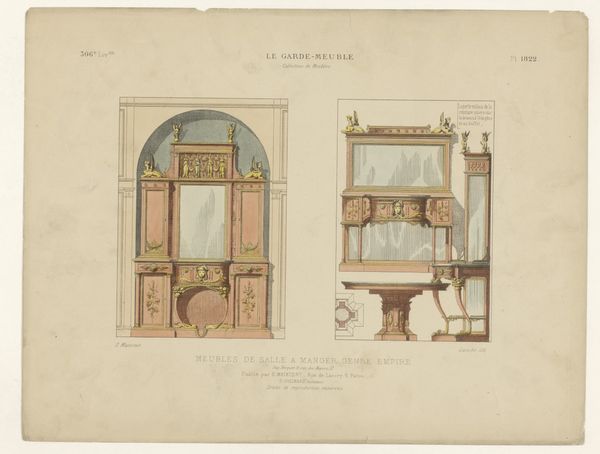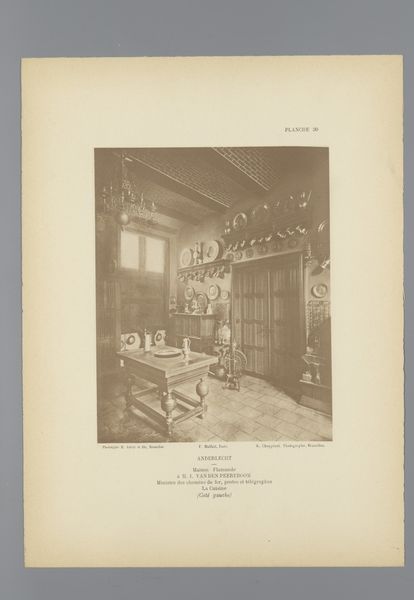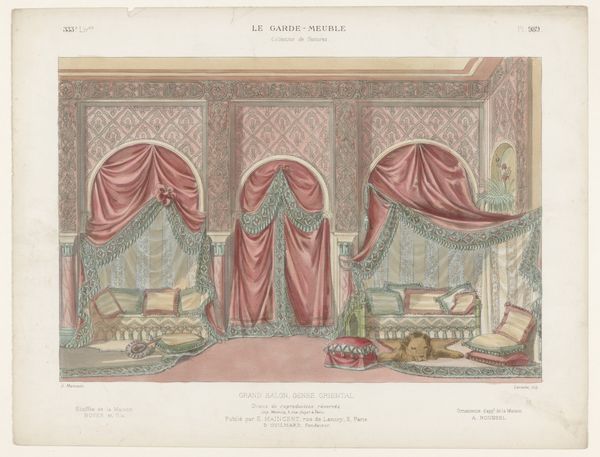
drawing, mixed-media, tempera, print
#
drawing
#
mixed-media
#
tempera
# print
#
11_renaissance
#
genre-painting
#
academic-art
Dimensions: height 275 mm, width 356 mm
Copyright: Rijks Museum: Open Domain
Curator: Welcome. Today, we're examining "Eetkamer in renaissancestijl," or "Renaissance Style Dining Room," a mixed-media print created by Léon Laroche around 1895-1910. It gives us an intriguing glimpse into design trends of the era. Editor: My immediate reaction is how incredibly staged it feels. Almost theatrical. Look at how everything—the heavy drapes, the fireplace, even the tableware—seems carefully chosen to project a sense of idealized domesticity. Curator: Exactly. Laroche created this as part of a larger portfolio showcasing interiors in the Renaissance style, reflective of the late 19th-century revival of historical aesthetics. These images catered to a bourgeoisie keen on demonstrating taste and historical awareness. Editor: Note the precision in the rendering of surfaces, like the cabinet's detailed carvings and the tiled fireplace. It speaks to an obsession with materials and the value placed on craftsmanship—but it’s a reproduction, a print, making it accessible to a wider consumer base. Curator: Precisely. Consider the cultural context: museums showcasing historical designs flourished. Laroche's print became another tool for disseminating and democratizing access to "high style," contributing to the era’s burgeoning design industry. It provided templates, aspiration and instruction. Editor: And I can't help but consider the social implications of all this "Renaissance" pomp. The revival was carefully constructed, borrowing stylistic features divorced from the actual lived experience of the historical period, ultimately manufacturing an idealized and sanitized image for consumption. Curator: Yes. And that constructed nature becomes apparent when we consider the political dimensions of these historical revivals. They were very frequently entangled with nation-building projects. This style asserted cultural continuity and implied national strength and tradition. Editor: Aided and abetted by the rise in consumer culture as this became a packaged experience. The print simplifies this style for broader appeal; it suggests accessibility to all for what was very clearly an aspirational look that still requires specialized labor for craft, textile and furniture creation. Curator: What this piece offers, in essence, is a glimpse into how visual media mediates and disseminates concepts of class, taste, and even national identity. Editor: And for me, the work becomes more about the manufacturing of taste than inherent Renaissance beauty. Seeing how this period style becomes mass-produced points to the very real shifts happening in labor practices and consumption during Laroche’s time. Curator: Indeed. Thank you for sharing your material perspective. Editor: My pleasure. It’s all about unpicking these layers!
Comments
No comments
Be the first to comment and join the conversation on the ultimate creative platform.
